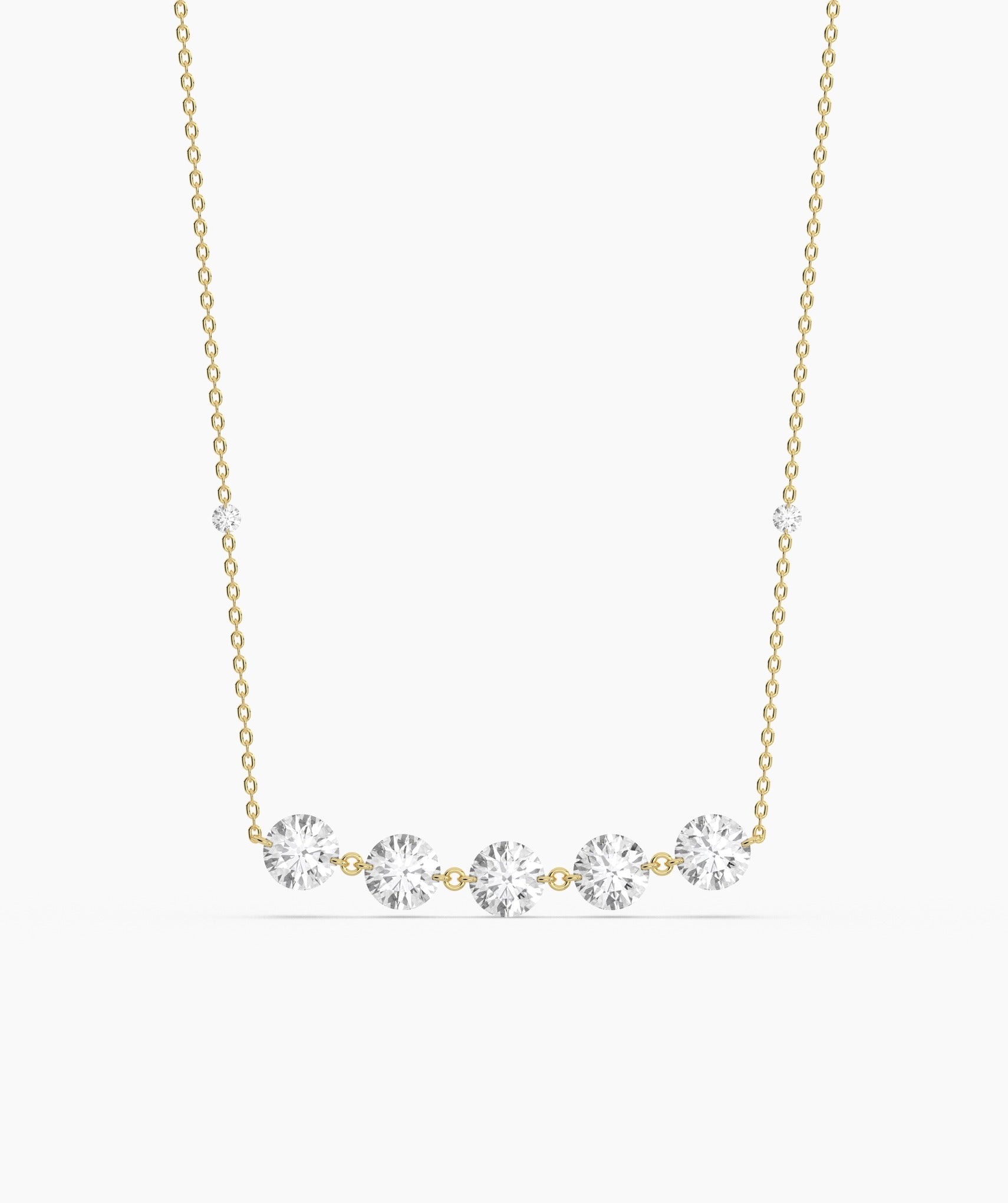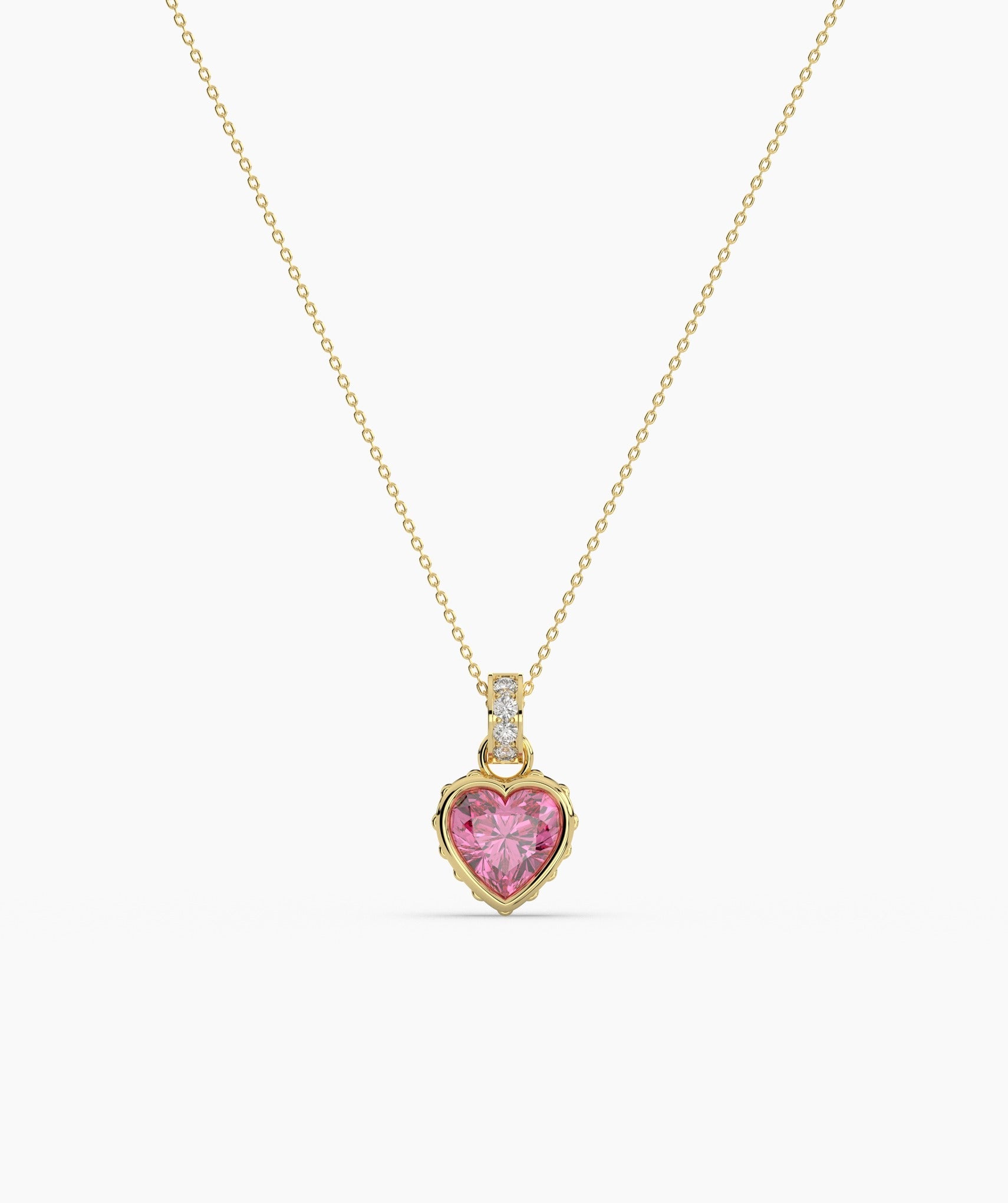
Pendant vs Necklace - What’s the Difference & Why It Matters
Share
When shopping for jewelry, you often hear the terms pendant and necklace used almost interchangeably. But believe it or not, there is a meaningful difference. Understanding that difference can help you choose pieces that flatter your style, match your wardrobe, and even make better gifting decisions.
In this post:
- We’ll define what a pendant is vs what a necklace is
- Compare pros, cons, and use cases
- Show how they can work together
- And highlight why BESEEN’s 14K Gold Diamond Necklaces stand out
What is a Necklace?
A necklace is a general term for any jewelry piece that is worn around the neck. It could be:
- A simple chain (without any hanging pieces)
- A chain with integrated decorative elements (beads, gemstones, links)
- A chain + pendant combo (i.e. a pendant hanging from the chain)
So, in short: every pendant piece is part of a necklace, but not every necklace has a pendant.
Key features of necklaces:
- They create a frame around the neckline
- The style and thickness of the chain itself become part of the visual statement
- Chains without pendants often lean more minimal, “neckline-enhancing”
What is a Pendant?
A pendant is a decorative piece (gem, medallion, charm, locket, etc.) that hangs from a chain (or another support). The pendant is generally the focal point of the necklace design.
Key features of pendants:
- They can be removable, so you could change the chain or the pendant without replacing both
- They draw attention vertically (hanging drop)
- The pendant’s design, size, shape, and setting influence how it catches light and how it complements clothing
Pendant vs Necklace - How They Differ
Here’s a side-by-side comparison:
| Feature | Necklace | Pendant |
|---|---|---|
| Definition | A necklace is a piece of jewelry worn around the neck. | A pendant is an ornament or charm that hangs from a chain. |
| Function | Main jewelry piece for the neck. | Decorative element that enhances a necklace or chain. |
| Component Type | It is the entire jewelry item. | It is a part or accessory added to a necklace/chain. |
| Worn As | Can be worn alone or with a pendant. | Must be worn with a chain (necklace or cord). |
| Design Variety | Comes in many forms (choker, chain, beaded, etc.) | Comes in many shapes (heart, cross, stone, locket, etc.) |
| Material | Gold, silver, platinum, beads, leather, etc. | Gemstones, metals, wood, glass, resin, etc. |
| Length Options | Can vary from chokers to long opera lengths. | Size is usually small, doesn’t affect length of necklace. |
| Dependency | Independent jewelry item. | Dependent – needs to be attached to a necklace or chain. |
| Purpose | Worn as a full accessory for style or symbolism. | Adds symbolism, personalization, or design to a necklace. |
| Customization | Customized by material, length, and design. | Customized by engraving, stones, symbols, or shapes. |
| Common Usage | Everyday wear, events, formal occasions. | Often given as gifts with meaning (e.g., religious symbols). |
| Examples | Gold chain, pearl strand, diamond tennis necklace. | Cross pendant, heart locket, gemstone charm. |
So, while the terms overlap, what matters is what each piece is trying to express.
Why Choose a Pendant Necklace?
- Customizability: You can change pendants or chains to refresh your look without buying a whole new necklace.
- Focal Interest: A well-designed pendant becomes a conversation piece, drawing attention to the chest area.
- Versatility: You might wear just a chain sometimes, and add the pendant for special occasions.
- Layering: Pendant lengths allow creative layering (e.g. one chain with no pendant, another with pendant at a different length).
Why Choose a Necklace (Chain/Integrated Design)?
- Simplicity: No moving parts or attachments means fewer places to break or snag.
- Stylish Minimalism: Some chains are so fine and elegant they shine on their own.
- Uniform Look: The design is cohesive, chain + elements are built into one piece.
- Comfort: For everyday wear, a simpler chain might feel lighter and less fussy.
How to Choose, Based on Neckline, Occasion & Personal Style
Here are a few guidelines:
-
Neckline match
- Deep V, scoop, or plunging necklines: pendants often work best
- Crew necks or high collars: shorter chains with minimal detail
- Off-shoulder or strapless: a dramatic pendant or statement necklace
-
Occasion
- Everyday wear: simple chain or subtle pendant
- Formal/evening wear: statement pendants or integrated necklaces
-
Personal style
- If you love switching up looks, pendants + chains give more modularity
- If you prefer “put-on-and-forget” ease, integrated necklace designs may appeal
-
Maintenance & durability
- Pendants have bails, loops, settings, check them regularly
- Chains must match the strength (thickness, clasp) to the pendant’s weight
BESEEN’s 14K Gold Diamond Necklace
When it comes to luxury, versatility, and daily wearability, BESEEN’s 14K Gold Diamond Necklaces brilliantly embody the best of both worlds, the refined elegance of a necklace and the eye-catching allure of diamond pendants.
What makes BESEEN’s necklaces special:
- They use 14K solid gold, ensuring both durability and a warm precious-metal glow
- The diamonds are natural, certified stones set in tasteful, refined mounts
- Many designs are adjustable in length (e.g. 16" to 18"), giving you flexibility for layering or varying necklines
- The designs are delicate yet radiant, with clusters or drop settings that capture light beautifully
- BESEEN is known for quality craftsmanship and a focus on subtle but brilliant sparkle, perfect for those who want everyday luxury, not over-the-top flash
For example, their “Dazzling 14K Gold & Diamond Necklace” features:
- 14K solid gold
- A cluster of natural diamonds
- Adjustable chain (16", 17", 18") for versatile styling
That kind of blend, high end, flexible, wearable, is precisely why a pendant vs necklace debate circles back: BESEEN’s pieces often are both, a refined necklace that places its focal beauty in the diamond cluster.
Styling Tips: Pairing Pendants/Necklaces with Outfits & Other Jewelry
- Layering: Start with a delicate chain (maybe without pendant), then layer a BESEEN diamond pendant necklace above or below for dimension.
- Metal match: If your earrings, rings, or bracelet are in yellow gold, stick with BESEEN’s yellow 14K gold variant to maintain harmony.
- Neckline alignment: Use the adjustable chain lengths to position the pendant just above or below your neckline for best balance.
- Mixing textures: Pair a smoother chain with a textured pendant (e.g. diamond cluster) or vice versa for visual interest.
- Care & maintenance: Remove your necklace or pendant before sleeping or exercising. Clean with mild jewelry solution or soft brush to maintain the sparkle.
Why BESEEN’s 14K Gold Diamond Necklace Wins in This Debate
- It offers the modular feel of a pendant (focus on the diamond element) while being engineered as a coherent, wearable necklace.
- The adjustable chain means you can adapt to multiple outfit styles.
- The craftsmanship ensures your pendant, bails, and chain all work together, reducing worries about mismatched strength.
- Because it’s designed from the start as a high quality jewelry piece (not just a chain + dangling add-on), you get better integration, better balance, and longer durability.
If someone asked, “Should I go for a pendant or a necklace?”, with BESEEN’s 14K Gold Diamond Necklaces, you get both elegance and adaptability, with minimal compromise.
Final Thoughts
- Pendant vs necklace isn’t an either/or, the best jewelry often combines the best of both worlds.
- Always match the pendant’s weight and visual balance to the chain strength.
- For everyday luxury, BESEEN’s 14K Gold Diamond Necklaces deliver a rare blend: elegance, durability, flexibility, and brilliance.
- If you want flexibility, start with a fine chain you love; then add a BESEEN pendant or diamond necklace to elevate it.
FAQs
-
Are a pendant and a necklace the same?
No, a necklace is the chain; a pendant is the charm that hangs from it. -
Can a pendant be a necklace?
No, a pendant is part of a necklace, not a necklace by itself. -
What classifies as a pendant?
Any small decorative piece that hangs from a chain. -
How many pendants are on a necklace?
Usually one, but some necklaces can have multiple. -
Can you wear a necklace without a pendant?
Yes, chain-only necklaces are common and stylish. -
Can a pendant go on any chain?
Yes, as long as the bail (loop) fits the chain. -
What kind of necklace can you wear every day?
Simple gold, silver, or stainless steel chains, durable and low-maintenance. -
Which chain is best for a pendant?
Cable, box, wheat, and snake chains are great; they’re strong and hold pendants well.

